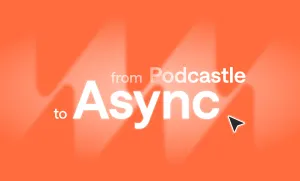LinkedIn is a booming space for job seeking, head hunting and enhancing professional visibility. But consider something a bit more wide-reaching — a ‘LinkedIn pulse.’ This pulse captures the flow of interesting information, the heartbeat of personal branding, and the rhythm of a new approach to content sharing.
The LinkedIn pulse for life and work online is so strong that Data Reportal confirms there are at least 1.20 billion registered LinkedIn users. With such a massive potential audience, you’ll need a well-crafted content strategy tailored specifically for LinkedIn.
This guide features tips and best practices for professionals and businesses aiming to thrive on LinkedIn. Read on to learn why and how to plan and execute a LinkedIn content strategy like a pro.
What Is a LinkedIn Content Strategy?
First, what does it mean to develop a content strategy tailored specifically for LinkedIn? Well, recall the journalism storytelling formula 5 Ws + 1 H + 1 SW:
- 5 Ws: What? Who? Where? When? Why?
- 1 H: How?
- 1 SW: So what?
Good storytellers use this foundational formula to present the audience with an impactful, well-packaged final product. A LinkedIn content strategy follows the same concept. It’s your comprehensive, purposive roadmap to ideate, plan, create and market content that suits the platform, its requirements and its unique audiences.
Benefits of LinkedIn Marketing
Developing a LinkedIn content strategy supports effective LinkedIn marketing, which is a game-changer for showcasing yourself and ensuring the right people pay attention.
The benefits of putting time, effort and careful thought into both the strategy and marketing arms of the process include these four major gains:
- Brand awareness: Not only can you establish your brand on LinkedIn, but you can also increase your reach with clever content promotion through advantageous platform pages and groups.
- Thought leadership: The beauty of social media marketing is that it opens countless doors for collaborative ideation and thought leadership. You don’t just want to be a number on LinkedIn. You can aim to be a prominent voice in your field of expertise.
- Networking opportunities: Sharing valuable LinkedIn content expands your social networking opportunities. You’ll get more access to like-minded people with whom you can build a professional community for lucrative partnerships in the future.
- Lead generation: LinkedIn marketing done right attracts potential clients, customers, collaborators or investors because of its extensive pool of enthusiastic users. The platform already provides the numbers. Your job is to craft high-quality content that resonates with the interests and needs of that large LinkedIn base.
Why Content Strategy Matters
Content driven by a sharp, focused and relevant LinkedIn strategy is highly likely to do well on the platform thanks to these three leading reasons:
1. Content strategy improves results
With an adaptive content strategy in place, your LinkedIn content will be geared toward favorable results. Example: A budding podcaster can use a clear content strategy for creative or unexpected podcast promotion on LinkedIn.
2. Content strategy aligns your team
When working with contributors, content strategies are effective in aligning team goals, objectives and performance. Example: A digital marketing team can revert to their content strategy to reroute when they experience unforeseen publication and promotion diversions.
3. Content strategy keeps you on track
Content strategies are imperative to ensure you're planning, creating and sharing content with clear directives and outcomes in mind. Example: A successful social media influencer can incorporate innovative strategies into their social media content plans to limit diluting what their ‘main thing’ is.
How To Build a Content Strategy for LinkedIn
Now it’s time to get to the fun part: learning how to build a content strategy. There’s a seven-step process that works exceptionally well for professionals and businesses wanting to amplify their content and audience reach on LinkedIn.
Step 1: Set Your Goals and Objectives
Step one in the content strategy-building process is determining what you want to achieve with your content. LinkedIn is the social media platform of choice, but you are the presence and personality.
Map out exactly what you envision for aspects like brand awareness, lead generation, thought leadership and audience engagement. You’ll be able to follow through with decisive steps in charting a trajectory for your place on LinkedIn.
By doing this first goal-setting and objective-defining step well enough, you can tap directly into aligning the bigger picture with your desired marketing milestones.
Step 2: Identify Your Target Audience
Do you remember those Data Reportal numbers from earlier? LinkedIn is big. We’re talking about 1/8th of the world’s population tapped into one platform for valuable business and idea exchange. Unsurprisingly, not all of those 1 billion+ people are looking for the same thing.
There are diverse users worldwide with various sets of professional needs. So, you have to understand who you want to reach and tailor valuable content to their interests, knowledge gaps and challenges. Knowing the WHO will better shape the WHAT and WHY in your service offering as a brand or business.
Step 3: Optimize Your LinkedIn Company Page
Every profile acts as a sort of cover page that represents each registered LinkedIn user. Before readers get into the details of who you are and what you offer, they need an appealing book cover that distinguishes you on the shelf.
The purpose of ensuring every aspect of your profile gives a good impression is to hook profile viewers so they’ll do a deep dive into your education, work history, experience, latest involvements and more.
Whether you’re an individual, business professional or part of a dynamic marketing team, you want to ensure your LinkedIn page is complete, looks professional, and is perfectly aligned with your brand.
Step 4: Choose Your Content Pillars
The best content structures and strategies are built on solid pillars. Your LinkedIn content is no different. In the fourth step of the building process, you’ll break your content strategy down into core topics. You can even break your topics down further into core themes.
This will keep your audience more focused, your content more organized and your presence more intentional. To get started, think of:
- What your service or product highlights are
- What insights you want to share
- Different parts, segments or ‘chapters’ of the story you want to tell with every core topic
Step 5: Develop a Content Plan
Lovers of all things organizing will appreciate this step — the content planning phase. Every winning strategy needs variation, creativity and thorough research about what your target audience responds well to. Your content plan should deliver on all those fronts.
Plan a mix of content types, including industry insights, company updates, thought leadership and user-generated content. Take it one step further and also diversify your offerings. Your LinkedIn profile and page should feature articles, posts, videos, carousels and even polls to keep your audience engaged.
Your LinkedIn content plan can also detail which other social media platforms you plan to link to from your page to maximize your cross-platform content sharing where appropriate.
Step 6: Create a Content Calendar
Okay, those who are naturally inclined toward organizing are really having fun as we wrap up the content strategy building process. Step six encompasses taking the content plan and putting it onto a calendar.
Project how you’d like to roll out your LinkedIn content onto a ‘time map’ — which is essentially what a content calendar is. Visualise your posting frequency to help you discern how regularly you want to share new content. Your calendar can include the optimal times to publish a LinkedIn post to make the most of optimum reach and engagement based on your LinkedIn analytics.
Step 7: Analyze and Adjust the Strategy
Step seven caters wonderfully to the fancy of the analyzers among us. In this final leg of building your LinkedIn content strategy, you’ll review your LinkedIn performance. When you’ve got an understanding of how you’re doing, you can then develop a plan for where and how to improve your presence.
Take a close look at your platform analytics to track performance. That way, you’ll be able to refine your strategy based on what works best, not just for your audience but for LinkedIn as a niche space. Also, supplement your external research with a few reports on the latest social media trends to stay abreast of relevant online developments.
10 LinkedIn Marketing Tips: Best Practices
By this point in the article, you know what a LinkedIn content strategy is, why it’s important and how to set one up. All that remains in your bag of tools for your LinkedIn revamp is noting the smartest tips and best practices so that you stand out.
Here are 10 tips to keep in mind for LinkedIn marketing that appeases the algorithms, too.
1. Prioritize valuable LinkedIn content
Focus on insights, solutions, and expertise rather than direct promotion. Audiences don’t want to feel like you’re selling yourself to them. Instead, they’re often looking to learn, get inspiration and exchange high-value information.
2. Write attention-grabbing headlines
Grab the attention of LinkedIn readers by starting your posts with intriguing questions, statistics or bold statements. This will encourage viewers to stop, ponder and read further. Thereafter, hopefully, they’ll engage and even make contact if they’ve been moved to do so.
3. Use compelling storytelling to share information
Share your personal experiences, interesting case studies and relatable narratives with a clear storytelling angle as the driver. LinkedIn content, although informational, educational or business-oriented in nature, can still be entertaining. The trick is to take readers on a journey by using narrative techniques.
4. Leverage LinkedIn articles
A content strategy with higher reward value caters fully to variation. So, write long-form content to establish authority and improve visibility in search results. This is especially useful in thought leadership where longer, well-researched pieces perform better than the shorter, sharper, social media-style articles.
5. Encourage employee engagement
If you work with a team of contributors, collaborators, partners or employees, get them in on the action. Encourage your fellows to actively comment, like, recommend and share your content.
6. Tag people and companies strategically
Mention relevant users and brands strategically to increase reach. However, avoid excessive tagging. Learn how to hashtag on LinkedIn to ensure that less favorable social media hacks don’t bleed into your LinkedIn strategy.
7. Participate in LinkedIn groups
Engage in industry groups to expand your reach and authority. There’s power in finding a trusted LinkedIn group of like-minded users to share, compare and exchange with. You might even be invited to a LinkedIn event or two for in-person networking.
8. Use LinkedIn ads
Invest in Sponsored Content, Message Ads, or Lead Generation Forms to boost visibility and generate leads. A parallel LinkedIn ad strategy will amplify your content marketing significantly.
9. Repurpose your content
Work smarter when necessary by turning a relevant blog post into LinkedIn carousels, webinar summaries into posts, and key long-form article takeaways into snappy video updates.
10. Use native video content
Like search engines themselves, LinkedIn loves video content. Employ clever video marketing techniques and create short clips that you can post at set periods in your content calendar. Popular examples include behind-the-scenes content or interviews and even LinkedIn Live. All of these boost engagement.
Optimize LinkedIn Content Creation
From being strategy-driven with your LinkedIn profile to leveraging social media to roll out your content strategy creatively, take your LinkedIn content marketing to a whole new level this year. You can completely reshape your LinkedIn presence and bolster your content production by developing a content strategy with purpose.
You don’t need a ridiculous budget, fancy equipment or an entire media department behind you. With Podcastle, you get to be at the helm with access to AI-powered audio and video tools. Fuel your marketing efforts with a renewed LinkedIn content strategy anchored by a solution of seamless content creation and editing products.
The Podcastle suite helps social media influencers, digital marketing entrepreneurs, and business professionals achieve studio-quality text, images, audio and video content. You can publish and promote these on each LinkedIn page.
Start creating with Podcastle today. Test Podcastle for free and take LinkedIn by storm in no time!








